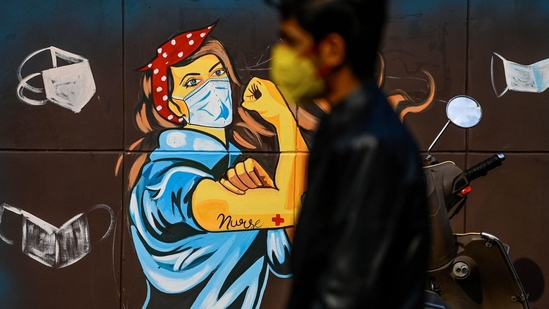Covid-19: What you need to know today
The current weekly average national positivity rate (based on Sunday’s number) is 9.9%, and rising – far higher than the 5% (and declining) level which indicates that things are getting better.
In the seven days to Sunday night, India added an average of 133,918 coronavirus disease cases a day. India has overtaken Brazil to the second spot in terms of overall cases (since the start of the pandemic), and is surging ahead. It is also the country that’s adding the most cases a day right now. The current weekly average national positivity rate (based on Sunday’s number) is 9.9%, and rising – far higher than the 5% (and declining) level which indicates that things are getting better.


Nor is the problem solely with Maharashtra, although that state remains an outlier in terms of both cases and deaths (3.4 million cases and 57,987 deaths in all; 63,924 cases and 349 deaths on Sunday). On Sunday, 63% of India’s 170,100 cases came from states and Union territories other than Maharashtra. Based on Sunday’s numbers, nine states and Union territories are seeing their highest numbers (seven-day averages) ever in terms of cases, with two more likely to join the list soon; five have average positivity rates in excess of 10%, and 18 in excess of 5%. India is now seeing a surging second wave, much like the ones the US and Brazil did.
Read more: Experts clear Russia’s Sputnik Covid-19 vaccine for use in India
India is currently vaccinating 3.4 million people on average a day (based on a 7-day average till Sunday night). Over the weekend, it crossed the 100-million mark in terms of vaccine doses administered (and was the fastest to do so across countries that have reached the milestone). That number breaks down into 12.9 million people who have received both doses of vaccines, and 78.5 million who have received one. At least nine of every 10 people receiving a vaccine have been administered Covishield, the Indian version of the AstraZeneca/Oxford vaccine. Even those who receive one shot of the vaccine get significant protection from severe infection and death, so over 91 million Indians can be considered safe – although some of them can still be infected, and many may still be able to transmit the virus to others.

HT’s calculations show that by the end of July, India is likely to have administered two doses to 244 million people, and one dose to 290 million more. That’s a significant number. The question is, will we have to wait till July to see off the second wave? That may not be required because of non-pharmaceutical interventions (or NPIs as people have begun terming them) such as the wearing of masks, the washing of hands, and, most importantly, social distancing (the one thing all of India, the governors and the governed, forgot). The calculation is rendered further complex by the extent of those infected in the first wave of the coronavirus disease (till early February), as estimated through so-called seroprevalence (or antibody) tests on a sample of the population. Surveys have put this number as high as 50% in some regions, and research has clearly established that the immunity that prior infections (even symptomatic ones) provide – this is called natural immunity – can last for at least six months.
Read more: Maharashtra, Punjab, C'garh: Govt points out gaps in Covid containment strategy
How soon a region gets the second wave under control, then, is a function of several factors: extent of prior infections; progress of the vaccination drive; adherence to Covid-safety protocol; the scope of restrictions imposed by local, regional, and federal administrators; and, especially in the case of well-connected metros and large cities such as Delhi, Mumbai, and Bengaluru, the network effect where movement of people into and out of the city on a regular (almost daily) basis affects both infection and dispersal rates.
Read more: Amid rising Covid cases, Delhi begins sixth round of sero-survey
NPIs have several side-effects, too – the most dangerous being the impact they have on the economy. Already, those put in place to combat the second wave of the pandemic in India have seen the Nomura India Business Resumption Index, a measure of where business activities are when compared to pre-pandemic levels, fall to 90.7 on April 4, a level last seen in the third week of December, after peaking at 99.3 in February. Which is probably why the Union government and state governments have to review their understanding of what is important and what isn’t.






